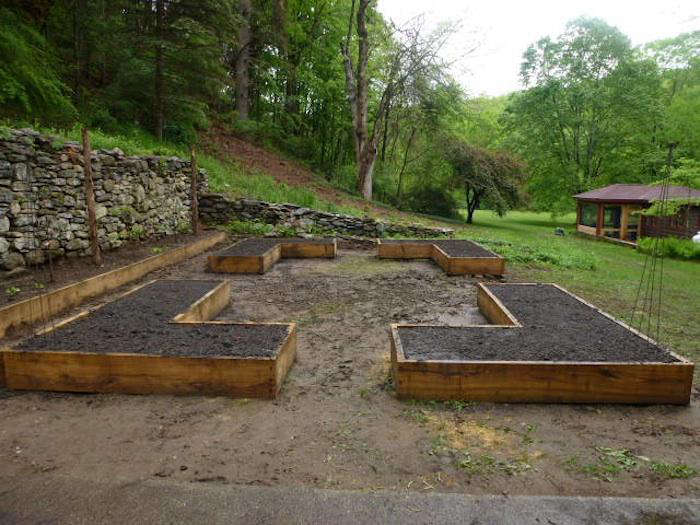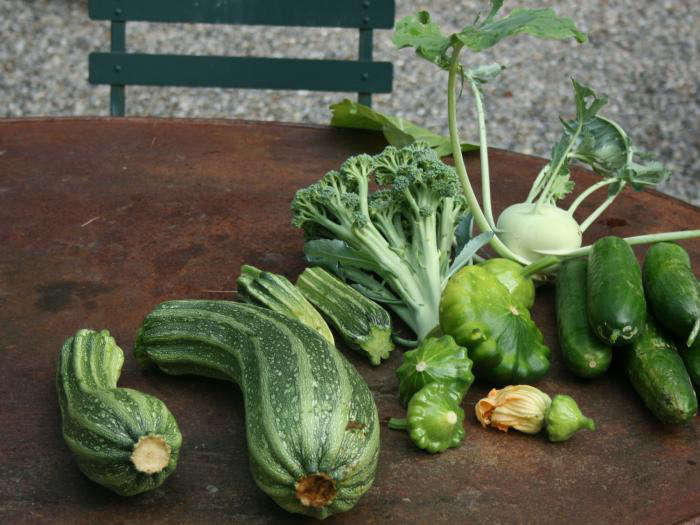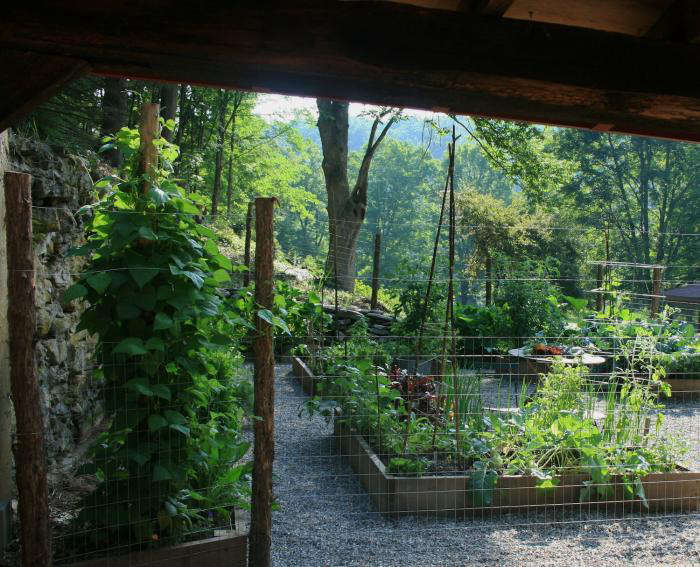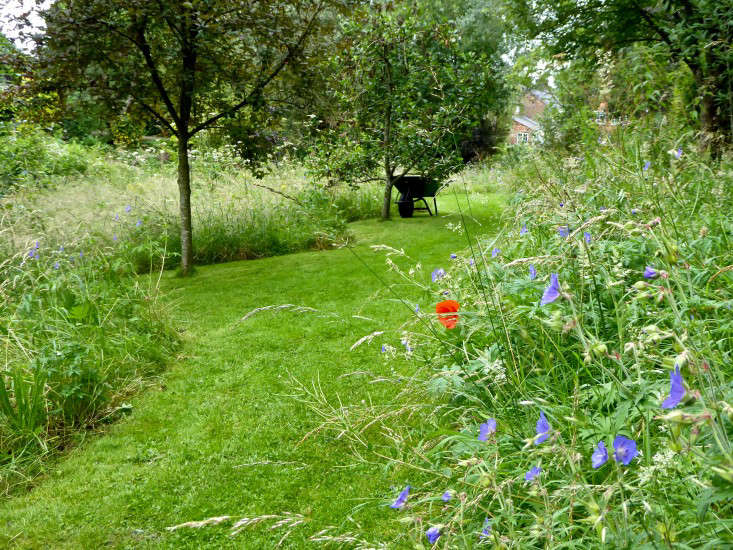In Litchfield County, Connecticut, Dee Salomon and Rob Norman bought a property on which there once stood an art school. With the building long gone, the old foundation wall was the site of a debris pile, piled high with fallen trees and landscape clippings. Then Dee came up with a better idea.
“A kitchen garden,” she said. “How about espaliered fruit trees against an old stone wall and boxes for veggies?” That was last April; by May the area was cleared of wood and marked for ground leveling. Raised beds and seedlings arrived soon after. And by late July, the garden was producing salad and vegetables for dinner every night. Here’s a step-by-step look at the transformation:
Photographs by Katharine Huber, except where noted.
Above: Raised beds in a square formation; the L-shape makes it easy to reach into the middle of the beds from any side. Along the stone wall (L) are espaliered fruit trees. To recreate the look in your own garden, see “10 Easy Pieces from Dee’s Kitchen Garden.”

The garden’s location was chosen for maximum sunlight, for its proximity to Dee’s kitchen, and for the opportunity to transform the area around the old stone wall which had become a debris pile. Approximately 21 feet by 36 feet, the garden has a deer-repelling fence of galvanized metal wire mesh and tension wire, supported by unpeeled cedar poles.
Are you obsessing over deer? For another deer-proof garden, see Elegant Deer Fencing, Hamptons Edition.

Above: Flashback to April: here’s what the same area looked like before it was planted. Photograph by Peggy O’Brien.

Above: In early May, Gaye Parise and Peggy O’Brien of Edible Views laid out the beds and, in consultation with Ms. Salomon, planted more than 30 varieties of vegetables and herbs. Tim Hansen built the beds, moved the earth and stone, and hauled the soil.

Above: The door to the adjacent in-ground storage building. Dee believes the building was originally used for storing root vegetables. Presently, it houses garden tools and the water pump. Pole beans grow adjacent to the building.

Above: The latch. Photograph by Peggy O’Brien.
Above: Tags from the fruit trees in the garden.

Above: Seedlings arrived in early May. The idea was to undertake companion planting, with plants that work harmoniously together. Vegetables were planted together to enhance the flavors of each other, to combat insects, and and look visually attractive together. For instance, says, Ms. O’Brien: “A good combination is parsley, tomato and basil.” Photograph by Peggy O’Brien.

Above: Companion planting: scallions with beets.
Above: Kale and parsley.

Above: Two parsleys, Italian and curly. The planter box is constructed of locust wood cut 2″ thick and connected with screws at the corners. Locust wood is resistant to rot and is less expensive than cedar.

Above: Young dwarf Bartlett pear trees soften the Connecticut stone foundation wall. Bamboo “tepees” enhanced with hemp twine allow cucumbers to grow vertically and create a perpendicular garden structure compatible with the horizontal dwarf pear espalier.
Above: Mustard greens with garden “truss” made from small bamboo sticks and connected with jute provide the framework for growing snap peas and string beans.

Above: Dee’s aged steel table provides a kitchen surface in the garden for vegetables: zucchini, squash, broccoli, and kohlrabi.

Above: Beets and zucchini.

Above: Kohlrabi and squash.

Above: Dee in her garden. Photograph by Rob Norman.
Finally, learn how to successfully design and create an edible garden with our Hardscaping 101: Edible Gardens guide.
This is an update of a post originally published on August 13, 2012.


















Have a Question or Comment About This Post?
Join the conversation (8)